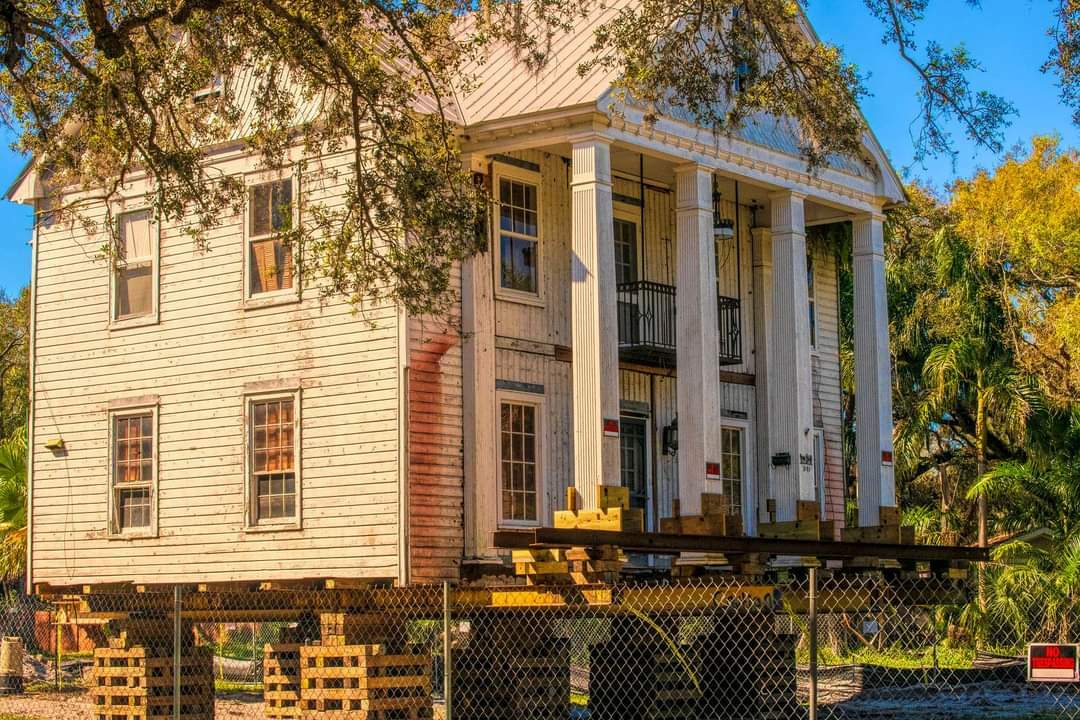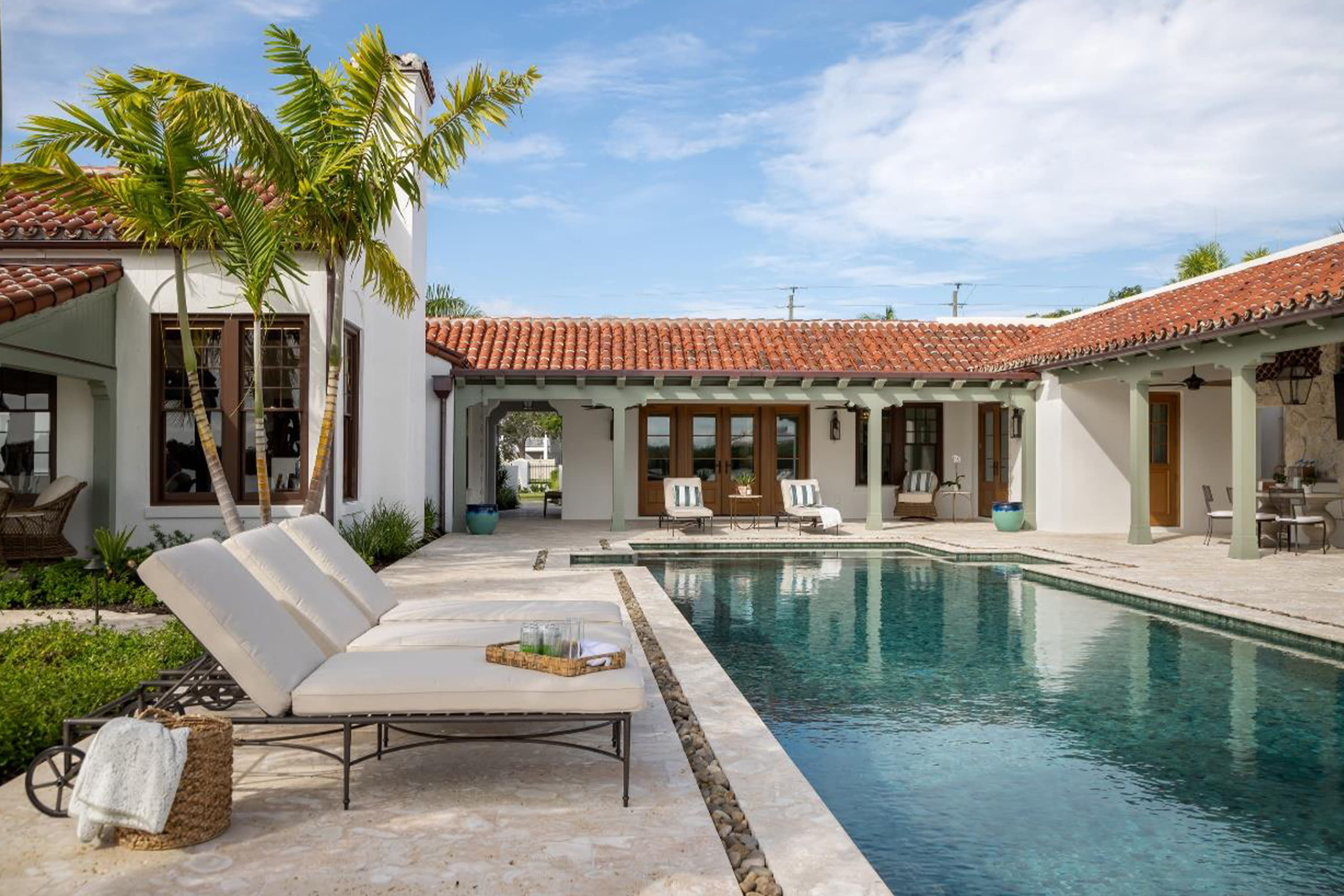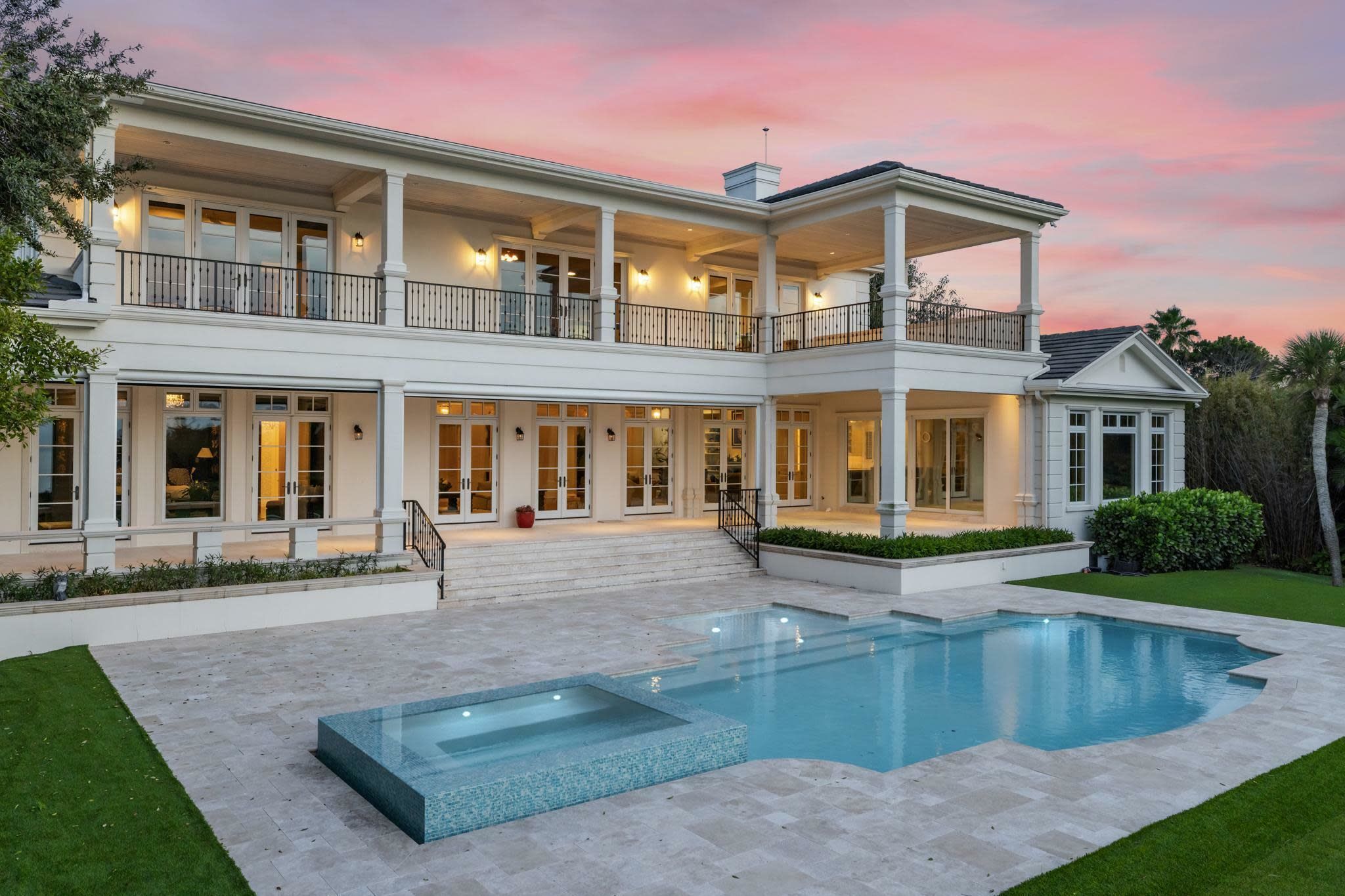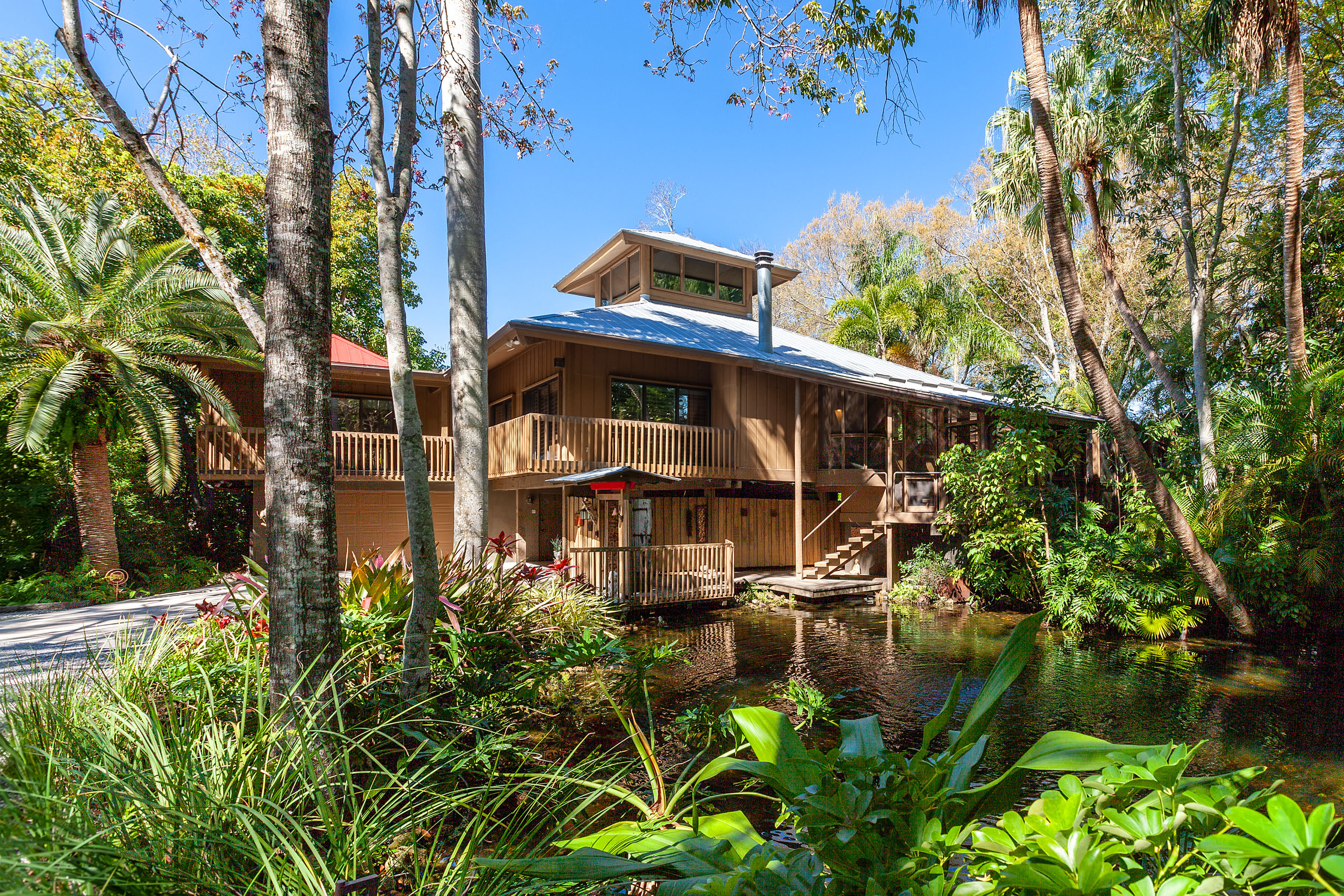Check Out the Restoration of the Oldest Home in the City of Bradenton

The historic Fogarty house at 3101 Riverview Blvd. in Bradenton.
Those who’ve done it know that if you're given a timeframe for remodeling your home, just go ahead and double it.
But extended timeframes are especially forgivable with a project like this one—which sees the oldest home in the city of Bradenton being saved from the wrecking ball.

The three storied home spans more than 4,000 square feet.
Known as the Tole Fogarty House, it was built in 1871. "It was a treasure to be able to save it. Almost a miracle," says David Windham, a general contractor and builder who has been in the industry and reviving old structures for 42 years.

Kitchen
We first wrote about the house when we spied it in a precarious-looking state of elevation to allow the build-out of a new foundation. "It was quite a feat to work under 170,000 lbs. of house. Now it’s higher for flood protection, too,” Windham says.

The home when it was raised to build a new foundation.
Image: Courtesy Photo

Elevation of the home.
Image: Courtesy Photo
That was homeowner Dr. Harold Ott’s goal. The retired veterinarian, who splits time between Palmetto and downtown Sarasota, calls himself the home's “humble steward" and bought it when it was advertised as a teardown in 2021 for $435,000.
Instead of the initial estimates of one year and $750,000, the restoration took two years and cost roughly $2 million. Now it's on the market for $2.5 million. “I took on this project to save a vital piece of the area's history—not to make money,” Ott says.

Original restored ceiling
Located across the Manatee River in what used to be known as Fogartyville, in West Bradenton, the home was built by Captain Bartholomew “Tole” Fogarty, a mariner.
Tole’s brother, John Fogarty, fell in love with the Manatee River area in 1865, after his ship was said to have been pushed into the area by a dangerous storm. He filed for a homestead in 1866 and Tole followed suit a few months later. A third brother, William “Bill” Fogarty, soon joined them and the state issued the brothers 135 acres of land.

Lori Lewis of House to Home was the designer.
They were the first to settle the area. They built a house, a boat-building business and a mercantile store, married, and had children. A church, school and wharf were established. By 1880, roughly 30 families were living in Fogartyville; in 1903, Bradentown, as it was called back then, incorporated and included Fogartyville.
But during the 1920s Florida real estate boom, the market shifted and descendants of the original settlers moved away. Fogartyville slowly assimilated and became known as West Bradenton.

One of two bedrooms on the third floor.
Still, the brothers’ legacy has lasted generations. The Fogarty Cemetery still stands in Bradenton and the home of one of the other brothers, on 29th Street, has been restored. The third Fogarty home has been demolished.

A large dining room can accommodate 14 seats.
While the home's history remains, the restoration brought it into current times. Sitting on half an acre and spanning 4,092 square feet, the home had seven bedrooms, but Windham and his team took it down to five to make space for walk-in closets.
Now there’s one bedroom on the first floor, two on the second floor, and two on the third floor, which offer water views of the river. The original house had no indoor plumbing but is now fully outfitted, with has four-and-a-half bathrooms and a laundry room. It also had no indoor kitchen when it was originally built. Windows were also replaced to meet hurricane codes.

The garage is also plumbed for a potential additional dwelling unit.
When Ott purchased the home, it had two window air conditioning units. Now it has three HVAC systems (one for each floor). There was also no insulation behind the walls.
It still has its grand front porch and columns, and the second floor has a balcony off the main bedroom. A new, oversized, two-car garage and a carport were added in the same style as the home. An extra perk: A city park with a playground adjoins the backyard.

Aerial view of the park beside the home.

Two car garage
But many original items were saved, like every interior door, which required stripping and sanding away multiple layers of paint that accumulated over 153 years, then creating a new door jam to fit the door.
“Can you imagine how much easier and cheaper it would have been to go to a building supply store and pick up a door with its frame to slide it in place?” Ott says.

One of four and a half bathrooms.

The bathrooms are all brand new additions.
The floors in three of the bedrooms are original, along with the staircase, spindles and handrail. The ceiling in the living room is original, too.

The staircase is the original.
Windham and the team, which included Karl Erickson as project manager and architect Bill Zimmerman, marveled at the craftsmanship of the time.
As Ott points out, "shipbuilders depended on building structures that could withstand the ravishes of a sometimes angry sea."
Windham agrees. “The one thing in our favor was it was so well built to begin with. They used a lot of reclaimed lumber.”

Reclaimed wood found behind the wall, most likely from damaged ships.
Image: Courtesy Photo
Removing walls revealed a 32-foot-long boat mast—and “not a crook in it,” Windham says. He thinks it was salvaged from a damaged ship and made note of mortise and tenon connections. There were no nails or screws available back then, he explains; mortise and tenon are connections born of carved Lego-type shapes that fit together.

Mortise and tenon connections were used to build the home.
Image: Courtesy Photo
But one historic relic stood out most. An etched photograph in tin of what appears to be a family was recovered during the work. Ott and Windham figure it must have stood on an armoire at one point, but fell behind it and into the baseboards. They guess it’s from the 1870s, when tin was used for photographs. Ott plans to leave it in the home. “That’s who it belongs to,” he says.

This photo etched in tin metal was found during the restoration. The identity of the people is unknown.
Image: Courtesy Photo
Other onsite discoveries included a massive beehive in one of the front porch columns. Luckily, Windham is also a beekeeper, who collected the bees and moved them. He continues to care for them today.
Now that the work is done, the home’s legacy has expanded thanks to Ott.
“Harold deserves a lot of credit. I think it would have been demolished if not for him. it’s a rare person who puts this amount of time and money into saving a home,” Windham says.

The third level of the home offers views of the Manatee River and a unique ceiling silhouette.
But, says Ott, “I never thought of the Fogarty House as mine. It belongs to the Florida community. It just fell to me to preside over the transition."
“My druthers would be that a loving, giving family with children buys it and takes advantage of Lewis Park next door," he says, "and that the family would share the place with the community whether it be parties, civic or fundraising events."
Interested? Call Marina Solo of Keller Williams Realty at (941) 960-6445.



